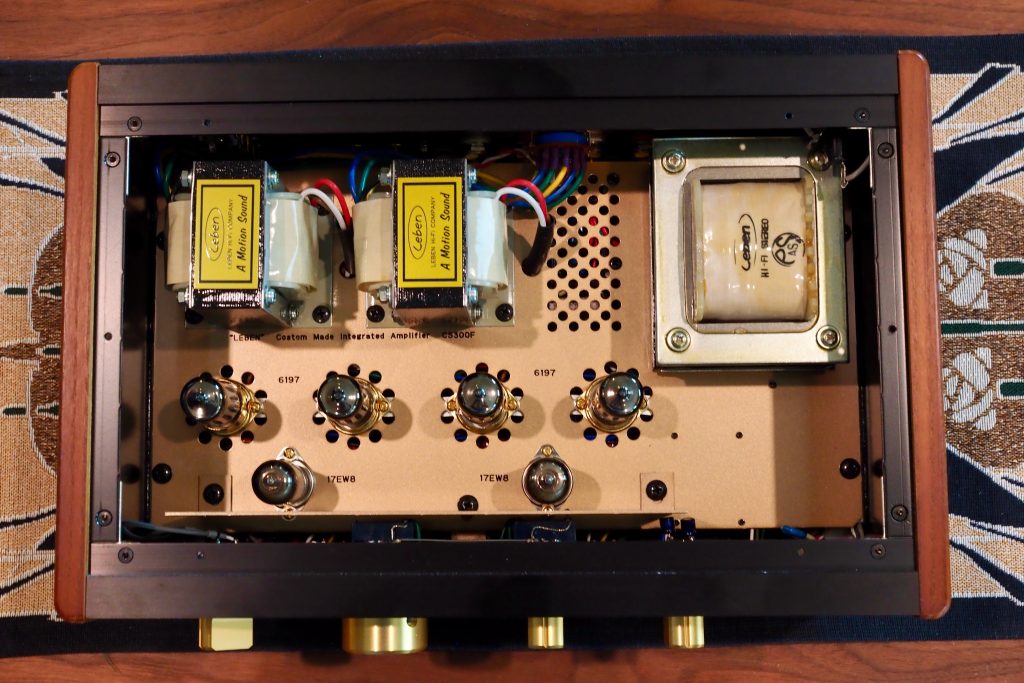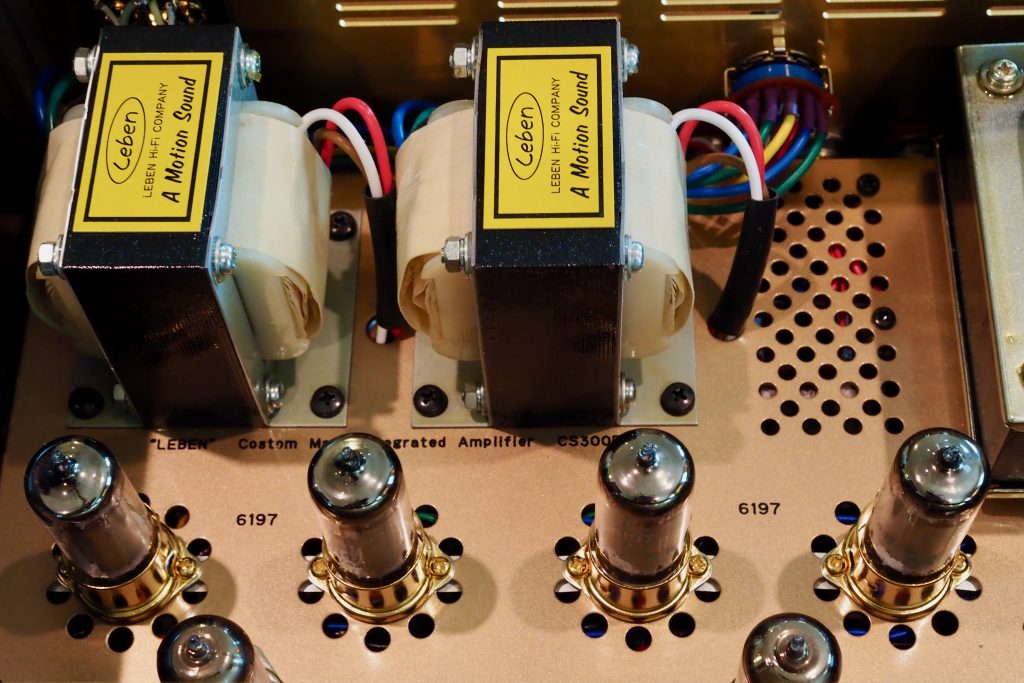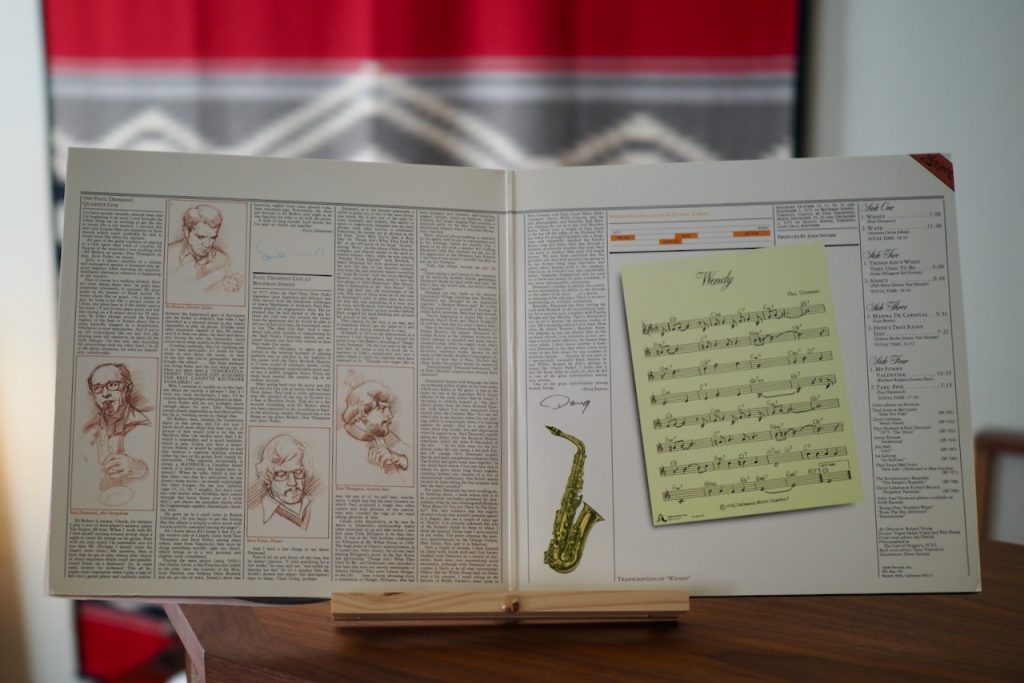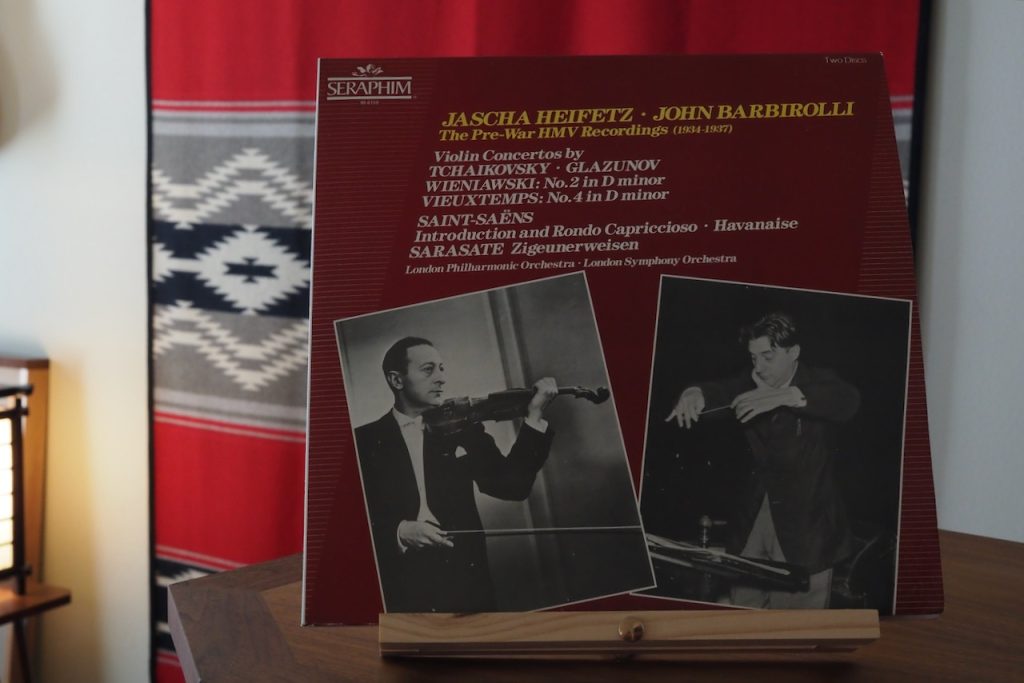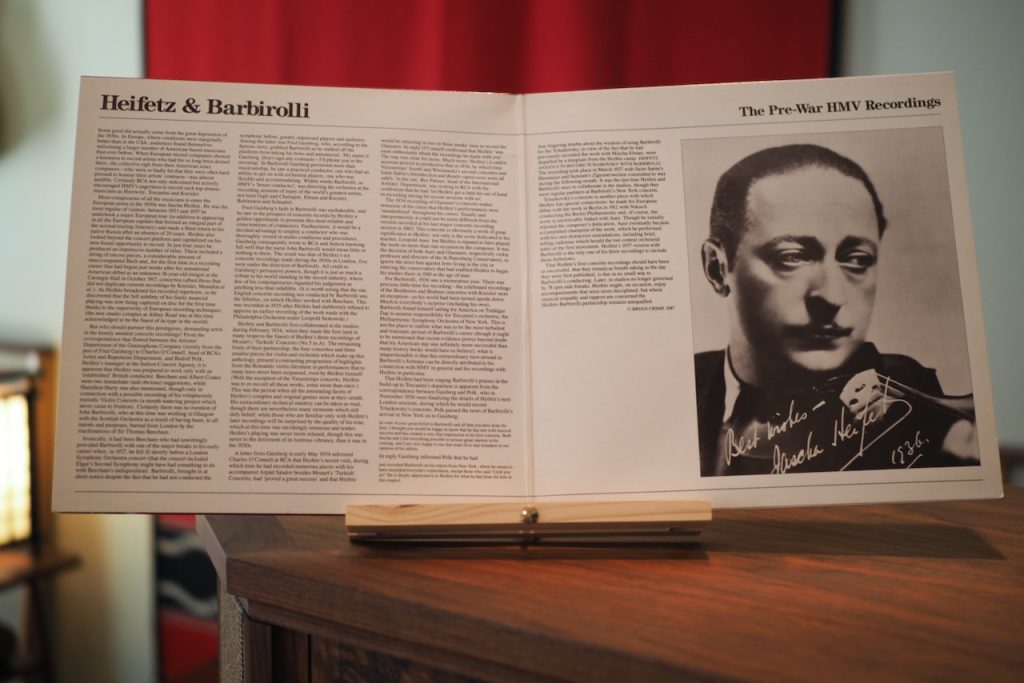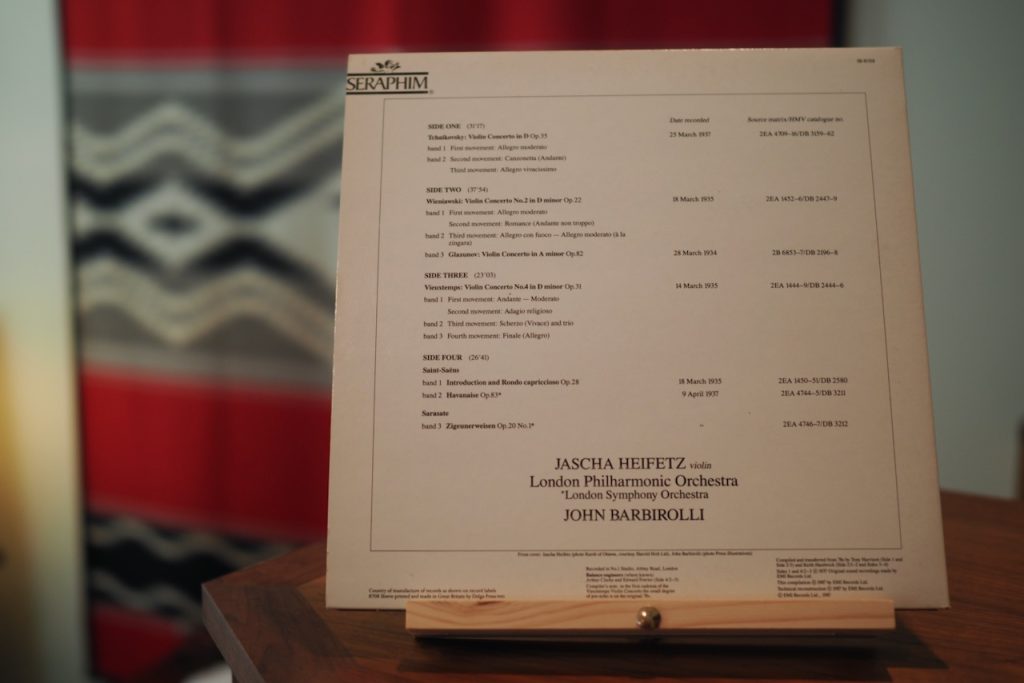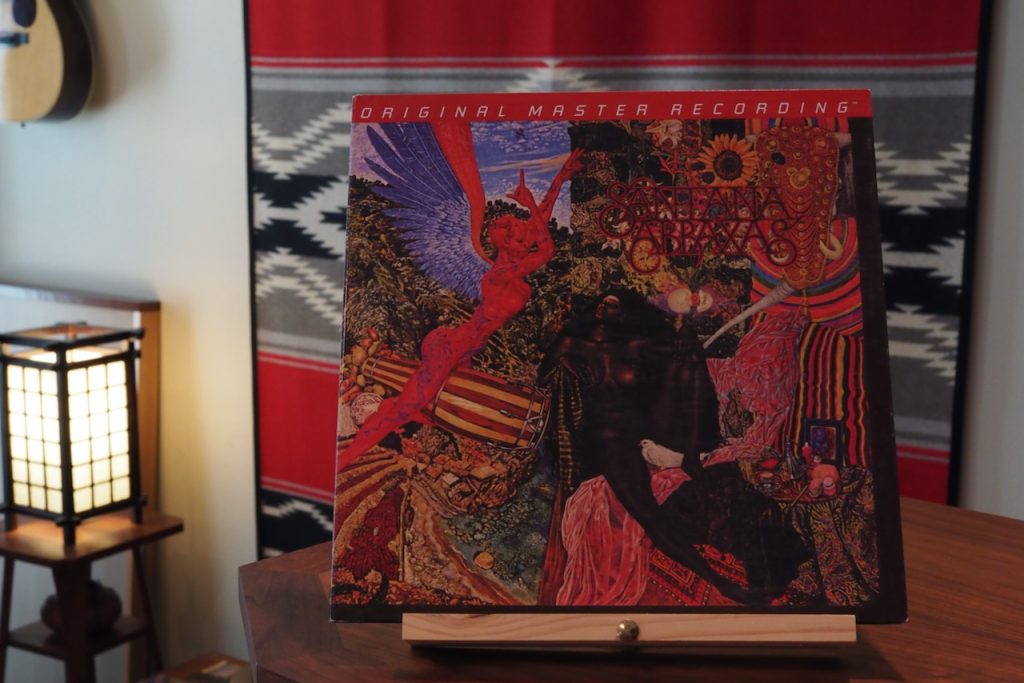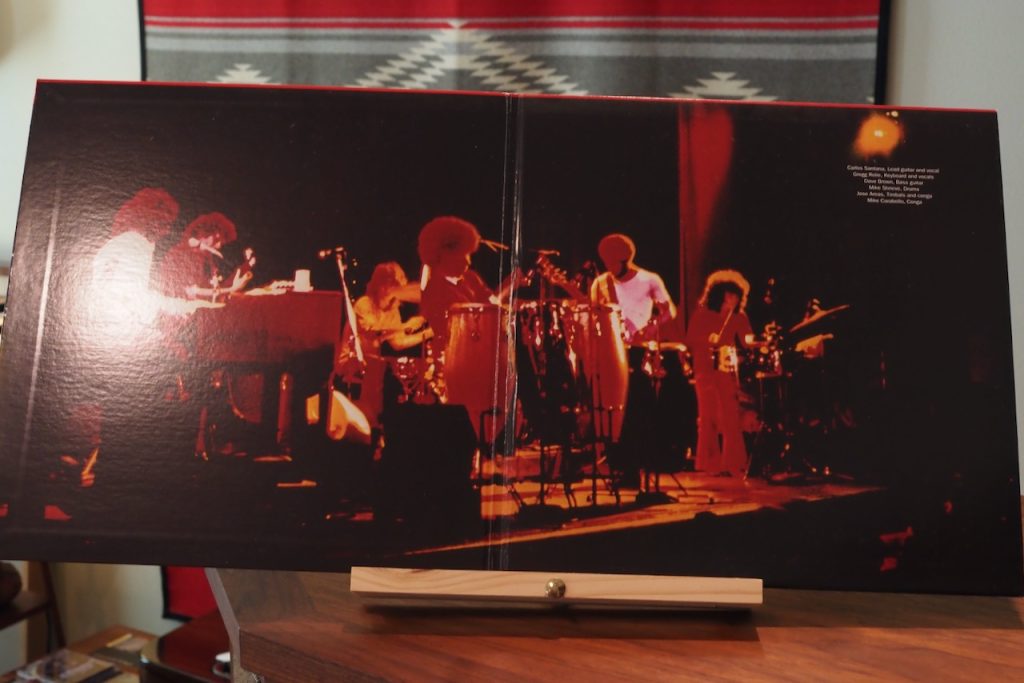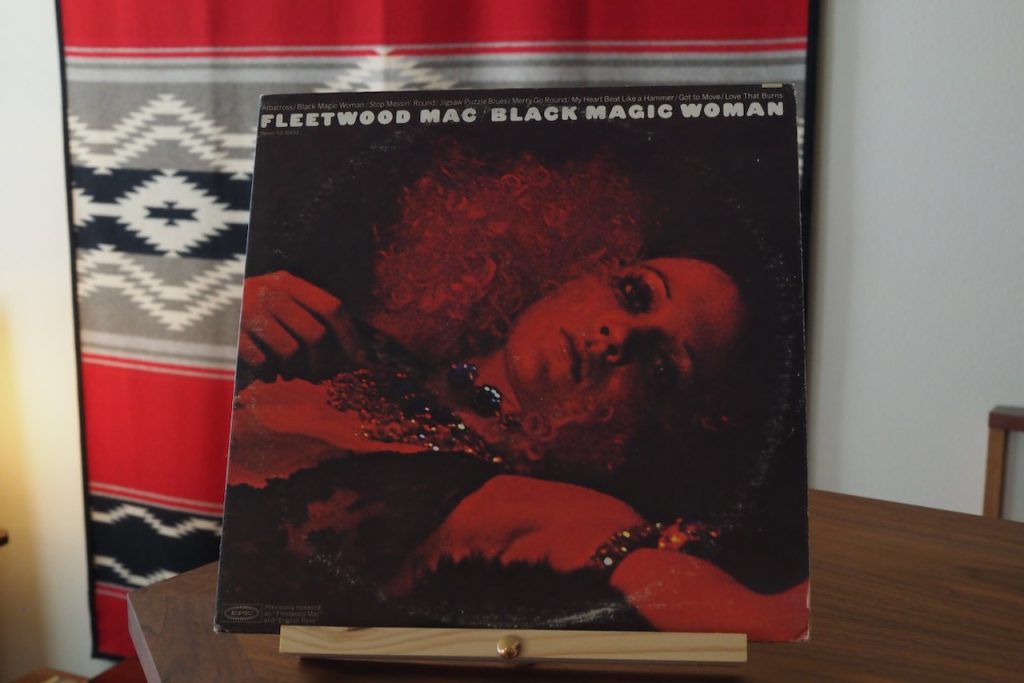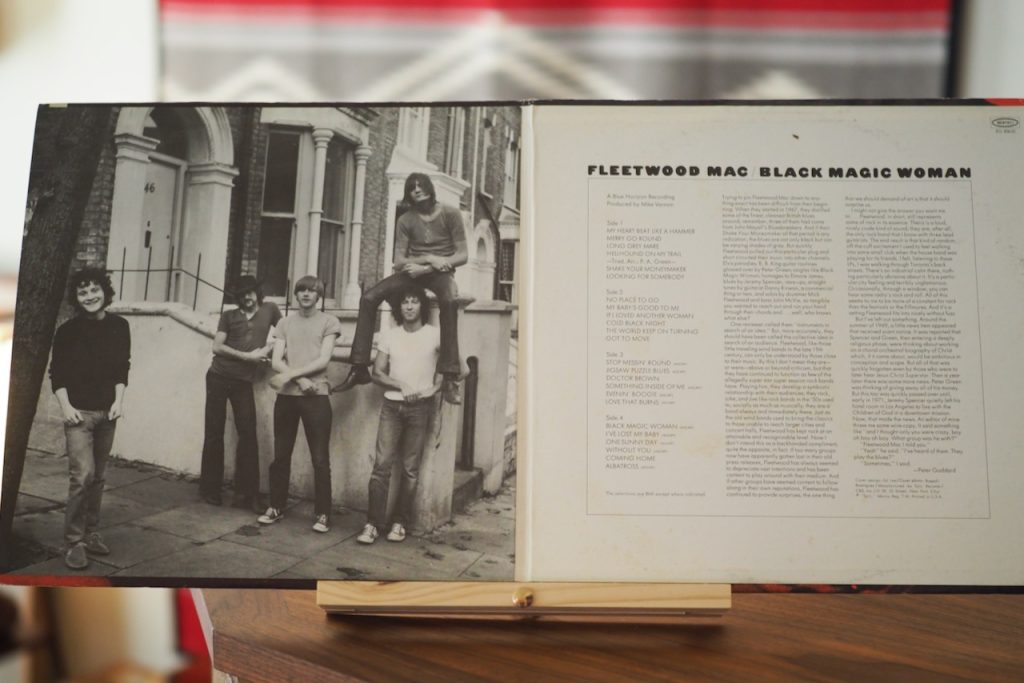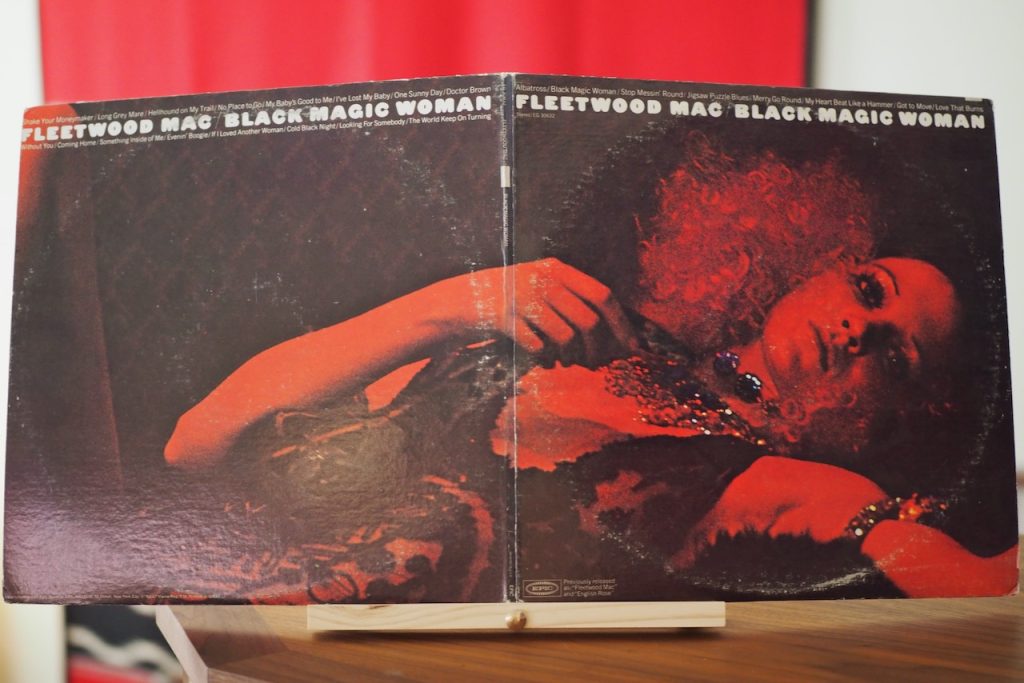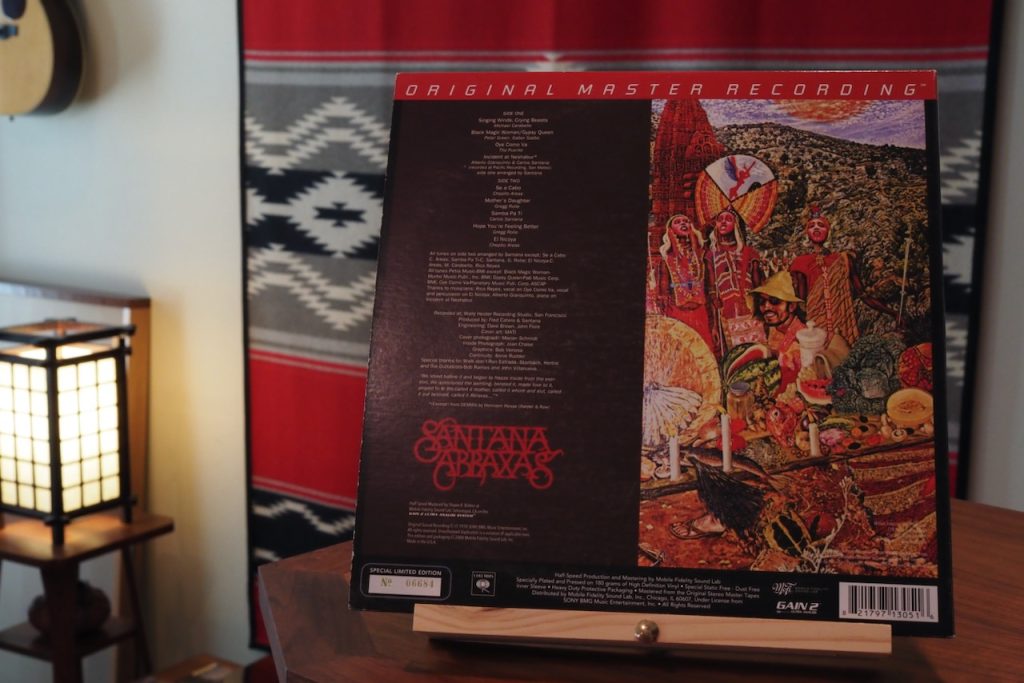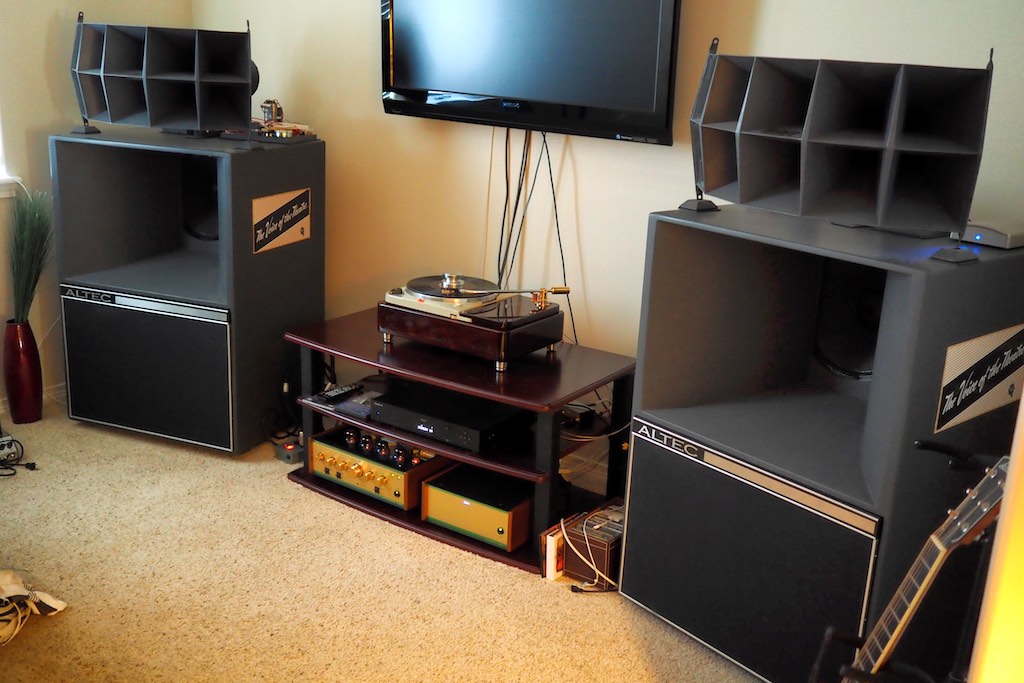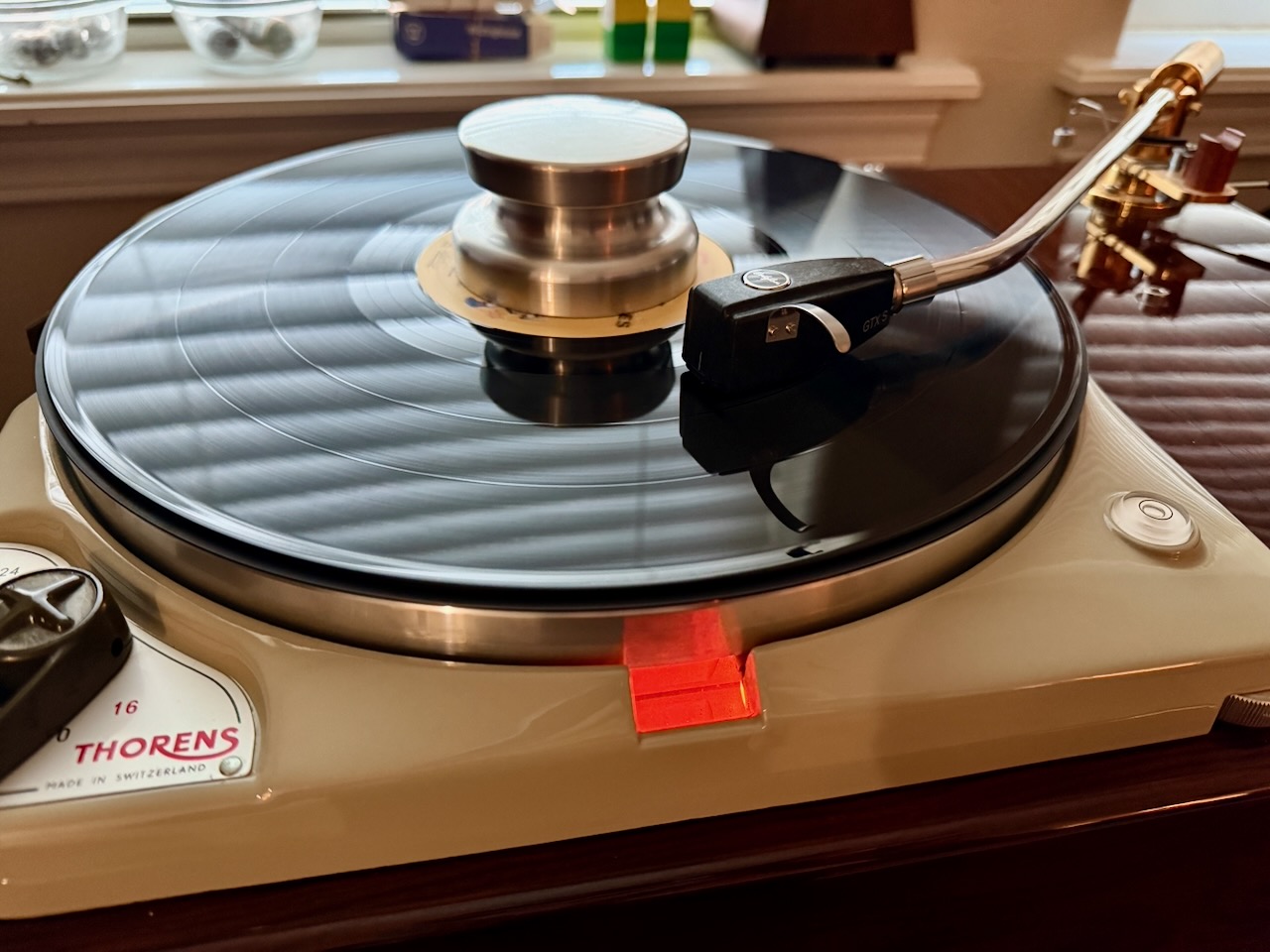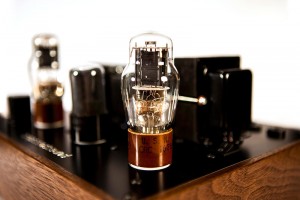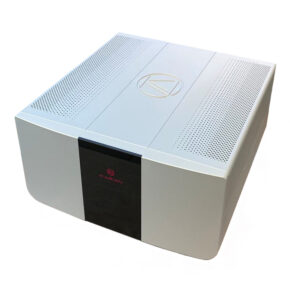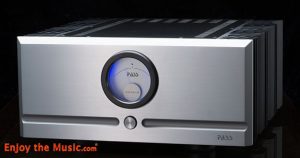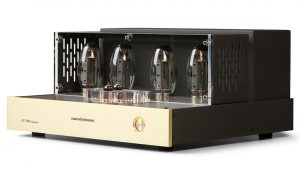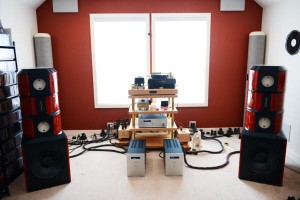Greetings friends, I hope you are doing well. I know there's a lot of Leben HiFi Stereo Company fans out there, and today I want to tell the Leben fans in the audience about the rather rare and exotic Leben CS-300F vacuum tube integrated amplifier (photo below).
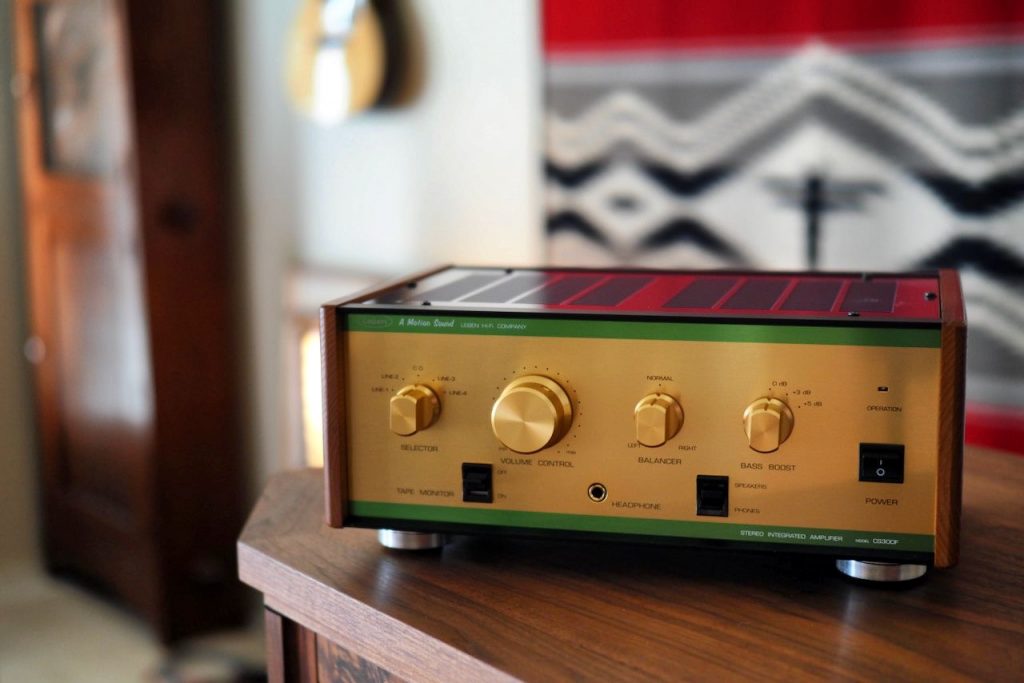
Over the years, I've either owned or written about most of the Leben HiFi Stereo Company's products, including the CS-600 integrated amplifier, the CS-300X Limited Edition integrated amplifier, the RS-30EQ phono preamplifier, the CS-660P power amplifier, the RS-28CX preamplifier, the RS-100 & RS-100U line preamplifiers, and the new CS-600X integrated amplifier.
The Leben CS-300F was released in 2013, and somehow its debut escaped my notice. Like me, I'm thinking some of you may have missed the debut of the Leben CS-300F too, as the CS-300F remains one of the rarer Leben integrated amplifiers found in the listening rooms of Leben enthusiasts around the world.
I've always found the Leben components I've owned or reviewed to be of high quality, reliable, have low cost of upkeep, to represent good overall value for their level of performance, have an attractive appearance, have good sound quality and musicality, and just be a general joy to experience on a day-to-day basis.

In fact the integrated amplifier I've owned longer than any other is my Leben CS-600 integrated amplifier that was released in 2005, and which I bought after reviewing it in 2007, nearly 15 years ago now (photo above is the latest CS-600X version).
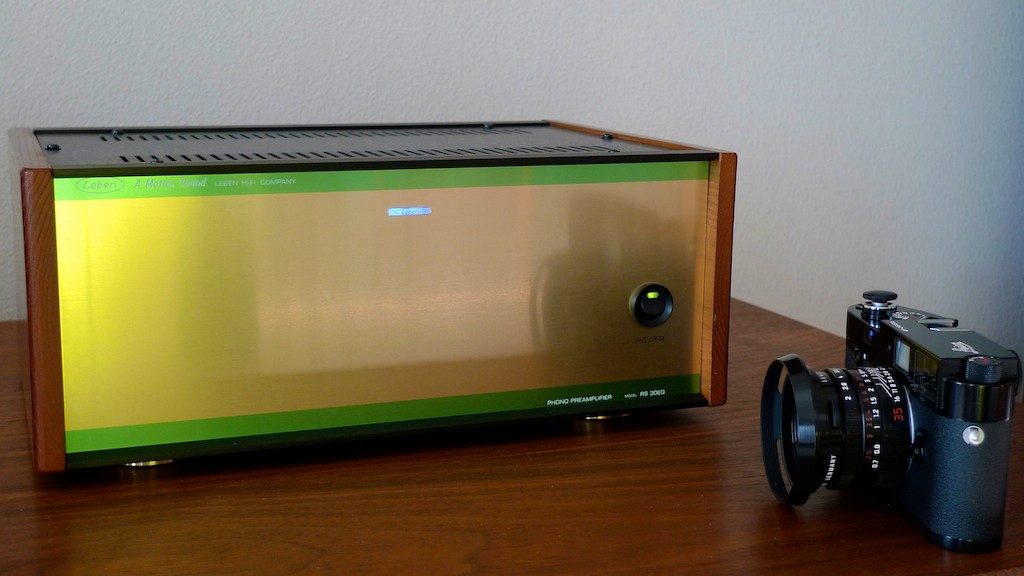
The Leben RS-30EQ phono preamplifier has been with me almost that long as well (photo above), and my plan is to keep both the CS-600 and RS-30EQ around forever.
I just really enjoy them, and that's typical of the sort of devotion Leben HiFi products tend to inspire in their owners.
The Leben HiFi Stereo Company
Most of you reading this are familiar with the Leben HiFi Stereo Company in Japan, but for those who are late to the story, allow me give you a background refresher about the company that Mr. Taku Hyodo founded in 1992.
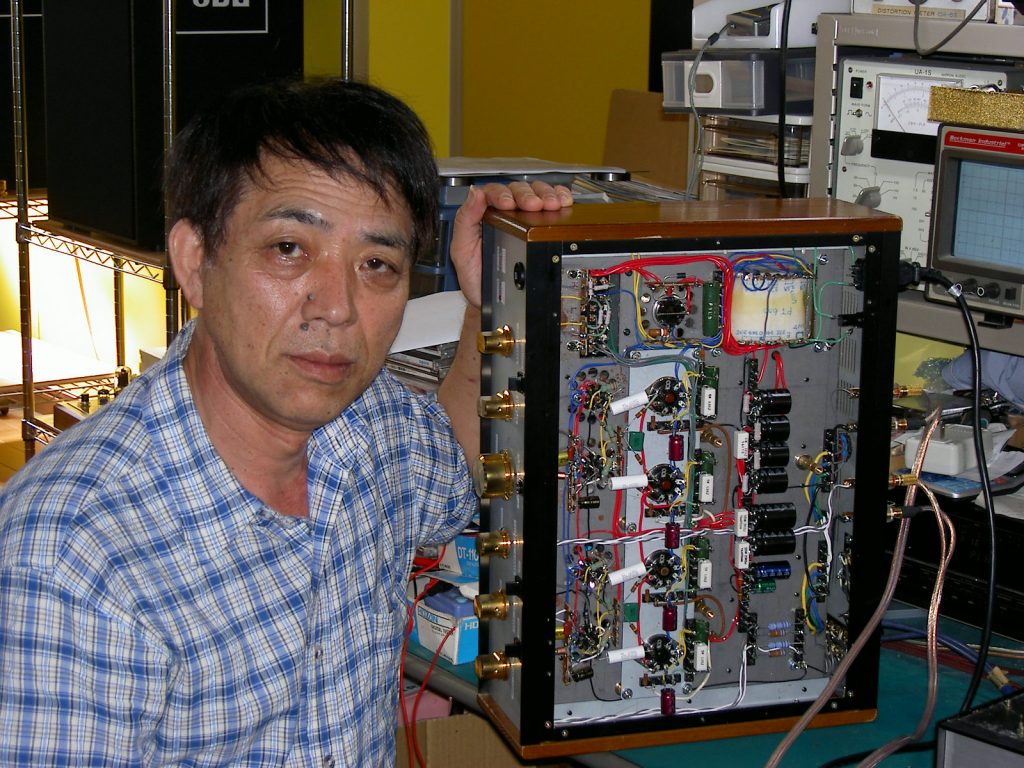
Prior to founding Leben, Hyodo-san designed electronics for the esteemed Luxman brand, whose roots go all the way back to 1925 when radio broadcasting was introduced in Japan.
During his Luxman years, Hyodo-san had made some amplifiers for himself and a few friends as fun projects. Hyodo-san's friends loved the sound of those amplifiers and encouraged him to use his obvious talents to start his own audio company.
Hyodo-san responded to his friends' encouragement by founding his own 'private label' audio electronics company in 1992 to reflect his philosophy that 'music is life.'
In keeping with his 'music is life' philosophy, Hyodo-san name his new company Leben, as "Leben" is a German word that literally means "life."
In the not so distant past, Leben products had been available exclusively in Japan, where they continue to enjoy a very enthusiastic following.
However, as interest in the exclusive Leben HiFi Company electronics boomed around the world, boutique audio exporter Yoshi Hontani (Muson Project) began to export Leben audio electronics in limited quantities for music enthusiasts in other countries so they too might enjoy their abundant charms.
As a result, Leben Hi-Fi Stereo Company products are now more readily available to enthusiasts around the world, although they are still rather exclusive audio electronics by any measure.
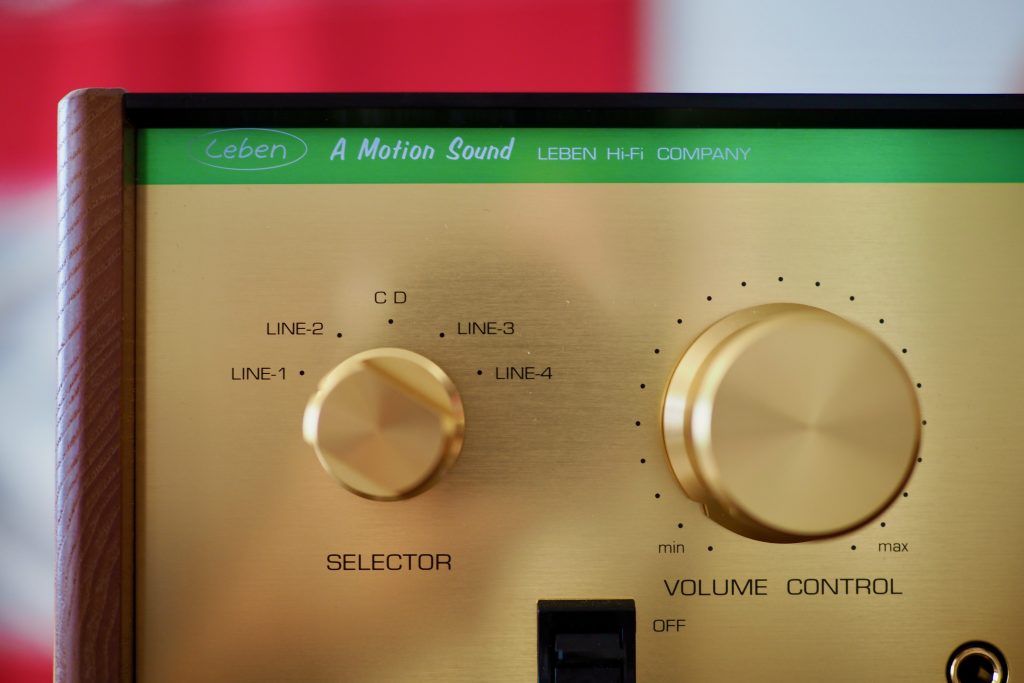
If you look closely at the front of the Leben CS-300F integrated amplifier's left top corner, you'll see that it says 'A Motion Sound' across the top (photo above).
I had asked Hyodo-San about the 'A Motion Sound' inscription, and he told me "When I was a youngster, my father worked as a movie projectionist and I went to see many movies with him. Paramount Pictures used to call a movie "A Motion Picture" and I adapted this phrase to Leben."
The idea is that movies consist of many still shots of theatrical performances, that when played at speed on a film projector, brings the film to life-like motion for its viewers.
In the same way Hyodo-san's "A Motion Sound" conveys the idea of when playing a recording of a musical performance, the recording of the musical performance attains 'living e-motion' through the Leben amplifier.
I asked Hyodo San what influences have shaped him as a designer:
"I have been listening to live music and playing musical instruments like the guitar, clarinet and drums since I was young. I was a professional acoustic guitarist for a few years in my twenties and now I continue to enjoy playing musical instruments as a hobby. My experiences performing and listening to live music helped me a lot in designing my amplifiers. Listening to live acoustic instruments guides my amplifier designs, as live music always helps people relax and enjoy the music."
"For example, when designing an amplifier, audiophile grade components don't always bring better sound. If I were to make an amplifier with nothing but premium audiophile components, there is no guarantee that the amp will sound good. It is more important to select components by listening so that as a whole, the amplifier plays music better. The most important thing is to achieve a total musical balance."
"I am aiming for a natural sound in my designs that allows the listener to relax and enjoy the music, so I always try to consult with as many ordinary listeners as possible, friends and family. I design my products for real people, the unspecified music lovers. I think Mike Eliot has it right (formerly an engineer with Mark Levinson, now Aria Audio) who said (paraphrased), "Don't rely on audiophile-grade parts to give you a musical sound. When you design a new amp, pick what you think are the most musical parts. Then consult with your wife or lover to see if they think it makes the music sound enjoyable as a reality check.""
Leben amplification products are known for excelling at playing music in a natural and effortless way, being harmonically rich, tonally correct and very transparent, having a tight and tuneful bass response, and a very wide bandwidth.
The Leben CS-300F Integrated Amplifier
When you look at the Leben CS-300F integrated amplifier, one of the first things you'll notice about it is that it has a purple top-plate instead of usual Leben CS-300X(S)'s titanium-grey painted top-plate.
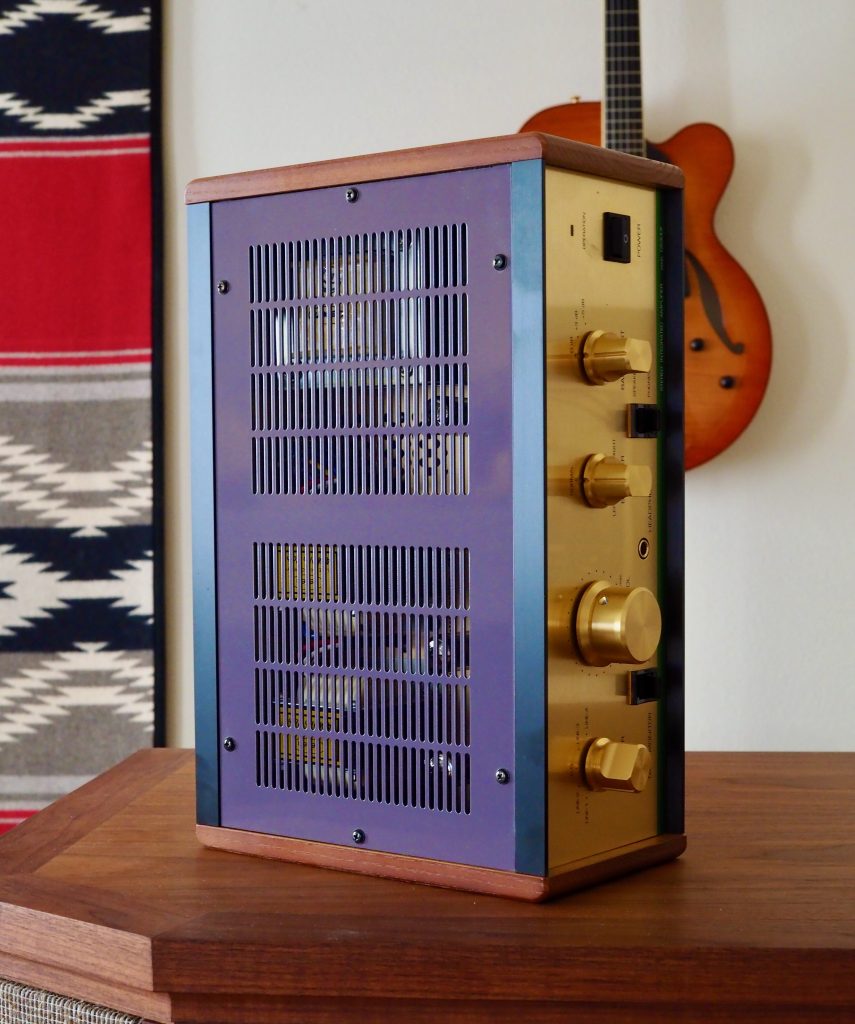
Leben enthusiasts were shocked when Hyodo-san selected a purple top-plate for the Leben CS-300F. I mean, who puts purple top-plates on HiFi equipment, and why would Hyodo-san do that?
Purple clothing was worn in history by emperors, kings, and queens, as purple was considered the color of royalty, and was symbolic of ancient royalty's claims of being deities, descendants of deities, or spokespersons for deities.
So the purple top-cover signifies there is something special—something 'royal'—about the Leben CS-300F compared to the standard Leben CS-300X(S), which it shares a common chassis and basic circuit design with.
That something 'royal' is that the CS-300F utilizes NOS GE JAN 6197 pentode power tubes (photo left center) and 17EW8 drivers (photo right center) instead of the CS-300X(S)'s more typical EL84 pentode power tubes (photo left) and 12AX7A drivers (right).
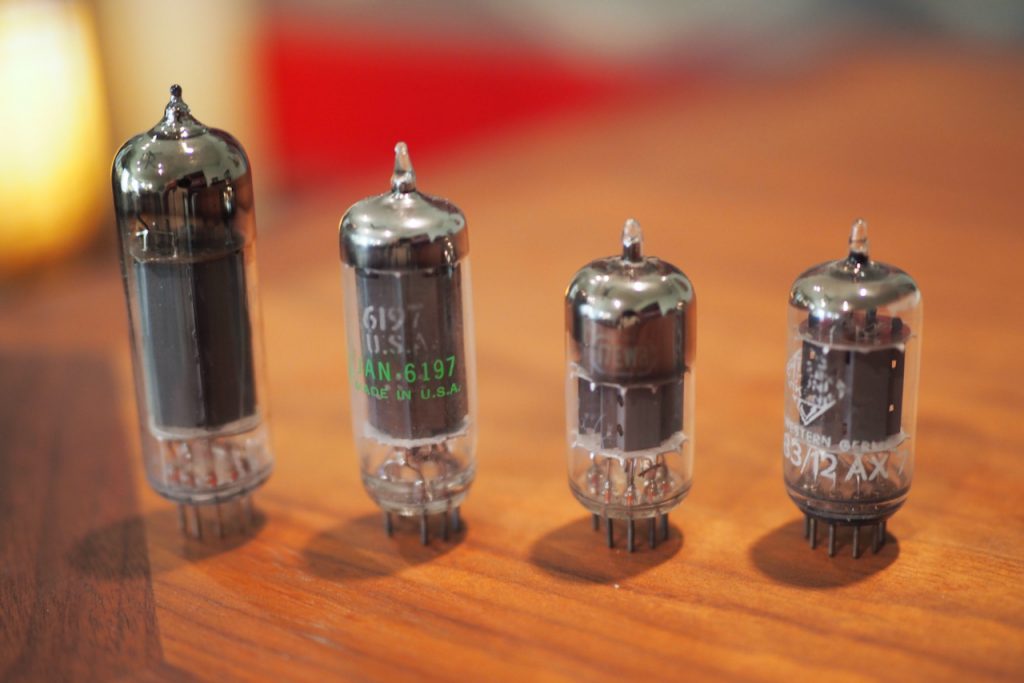
I suspect that the color purple was symbolic of Hyodo-san's high regard for the very transparent and clear sounding combination of the NOS GE JAN 6197 and 17EW8 vacuum tubes' presentation, vacuum tubes with a sound quality that was 'informed by the deities', so to speak—compared to the more typical EL84 and 12AX7A vacuum tubes found in the CS-300X(S).
As Yoshi-san related it to me, Hyodo-san wanted to do something new design-wise, as he was impressed with the performance of the NOS GE JAN 6197 power tubes and 17EW8 drivers. Hyodo-san wanted to showcase these remarkable vintage vacuum tubes performance in a new integrated amplifier model, so he bought up a large stock of NOS GE JAN 6197 & 17EW8 vacuum tubes for use in what would eventually become known as the Leben CS-300F.
The NOS GE JAN 6197 power tubes and 17EW8 drivers—as far as I can determine—have never been used in a HiFi amplifier before Hyodo-san's design of the Leben CS-300F.
Size-wise the 6197 is a diminutive vacuum tube even in comparison to the already svelte EL84. The 6197 looks like like a slightly taller driver tube rather than a power tube.
According to The National Valve Museum "The 6197 is a special quality power pentode that was designed for operation for long periods either full on or at cut-off. The applications were within digital computers of the 1950s. Also on the data-sheet is a specification for operation as a Class A amplifier."
The RCA Receiving Tube Manual says the 17EW8 is high-mu twin triode for use in "... rf-amplifier and oscillator-mixing circuits in FM and AM radio receivers."
While the 6197 power tubes and 17EW8 drivers are not current production vacuum tubes, they do appear to be relatively abundant in my brief survey of websites selling vacuum tubes.
Prices of 6197 tubes are very reasonable at the time I checked, being about $3 USD to $7 USD per tube depending on the seller. The 17EW8 driver tubes sell for between $5 USD and $10 USD depending on the seller.
That's a tremendously good value for high-quality NOS vacuum tubes, and if you are contemplating being a Leben CS-300F owner I suggest that it would be wise to purchase a number of sets of tubes with the future in mind, given there are no current production versions of these vacuum tubes.
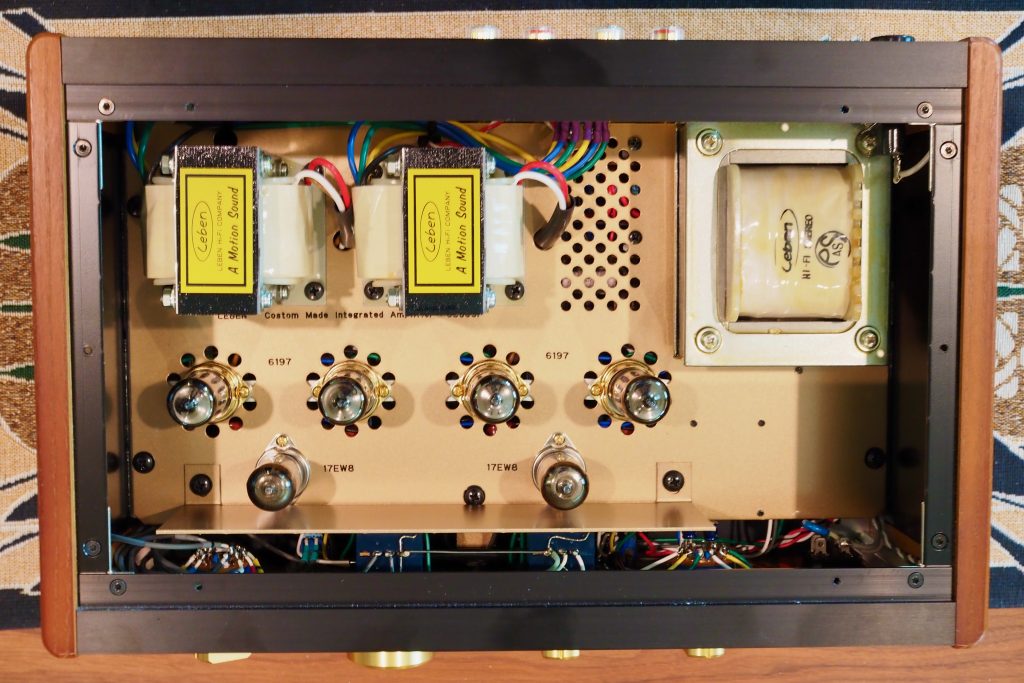
Hyodo-san based the circuit of the CS-300F on the same Class A-B push-pull circuit that has been so successful in the various versions of Leben CS-300, but optimized the component choices and their values to bring out Hyodo-san's desired voicing from the NOS GE JAN 6197 power tubes and 17EW8 drivers in his new CS-300F.
Please note, that even though the circuits are similar between the CS-300F and the CS-300X(S), due to the differences in component values needed for the NOS GE JAN 6197 power tubes and 17EW8 drivers you cannot substitute EL84 and 12AX7A vacuum tubes for them, or vice-versa, and by doing so you could potentially damage the vacuum tubes and the amplifiers. You've been warned.
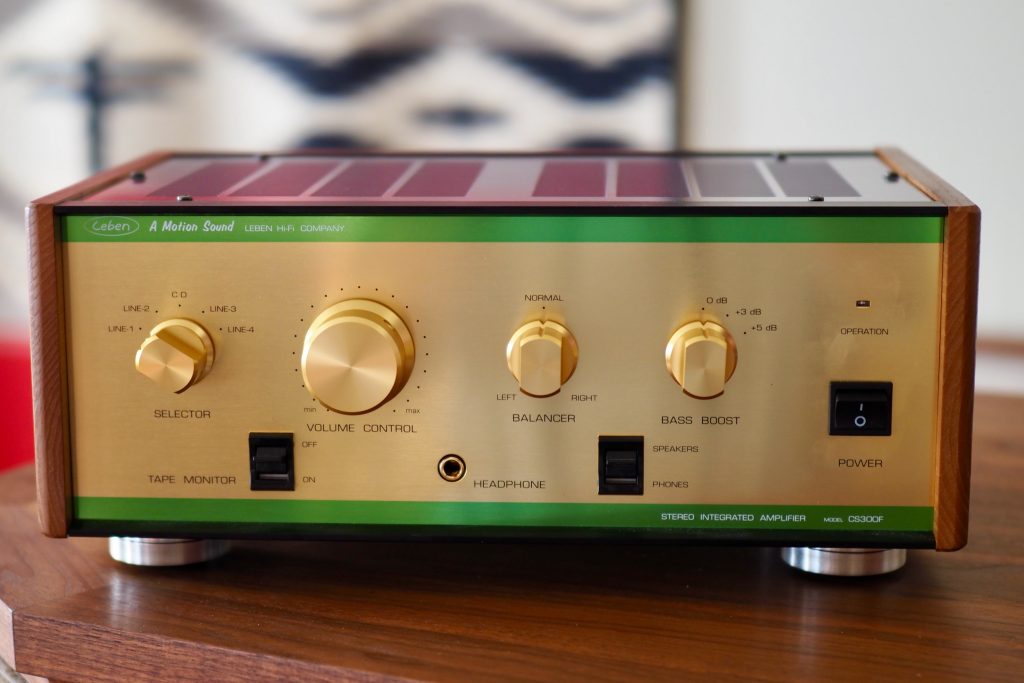
Let's do a 'walk-around' of the Leben CS-300F's features.
On the front you see (photo above), from left to right, the source selector, the tape monitor switch, the volume control, the headphone jack, a balance control, a switch to select either loudspeakers or headphones for listening, a bass boost selector that allows the addition of +3 dB or +5 dB of boost, and power switch, and an indicator light that illuminates when the CS-300F is powered up.
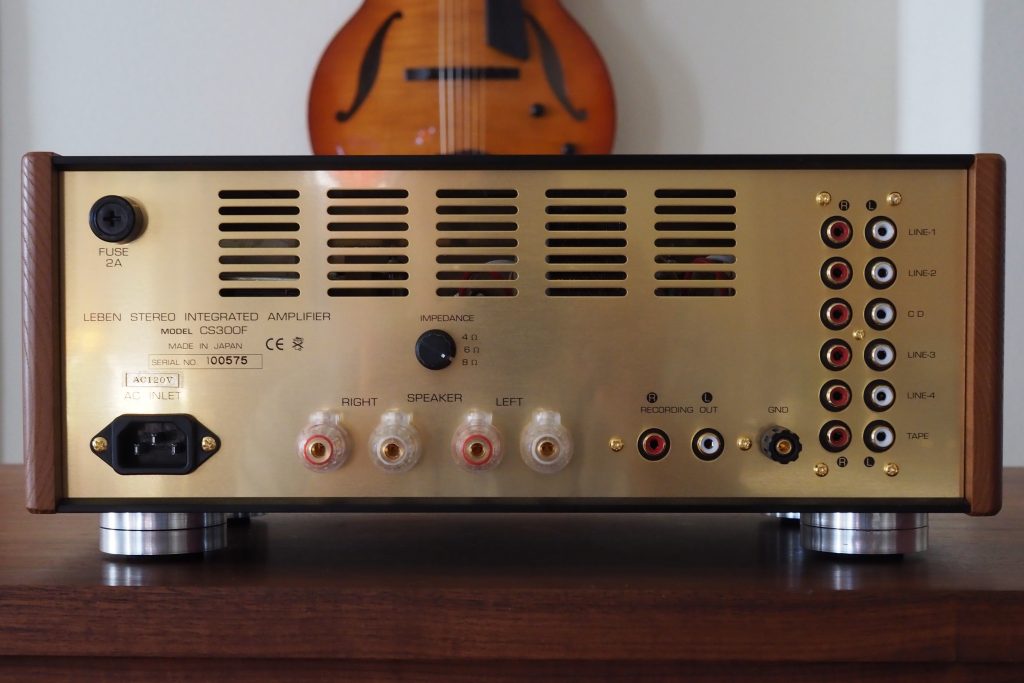
On the back of the CS-300F's chassis (photo above), from left to right, are the fuse holder, the AC inlet, the loudspeaker binding posts, an impedance selector with settings for 4 Ohm, 6 Ohm, and 8 Ohm loudspeakers. Next are a pair of recording out female RCAs, a ground connection point, and six pairs of female RCA inputs, four for line level sources, one dedicated CD input, and a dedicated tape input.

On top is the aforementioned ventilated purple top cover.
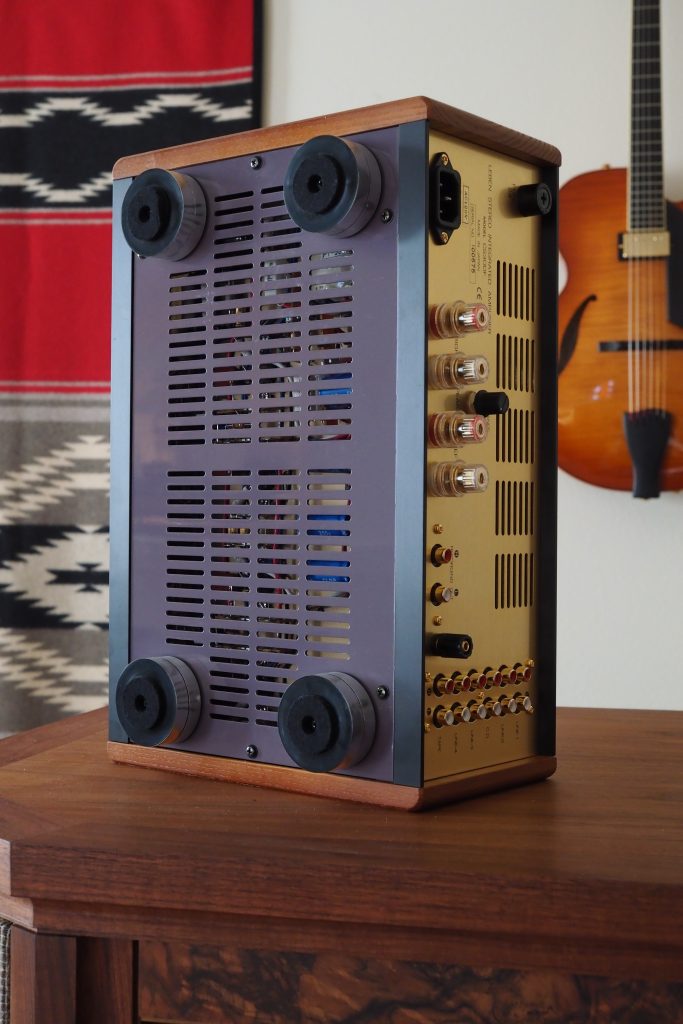
On the bottom of the chassis is another ventilated purple bottom plate that is the twin of the purple top cover—gasp! (It looks less purple in this photo because of the different lighting. It's still purple.)
Also on the bottom are four nice looking equipment footers, each fitted with a felt pad to keep your furniture from getting scratched up.
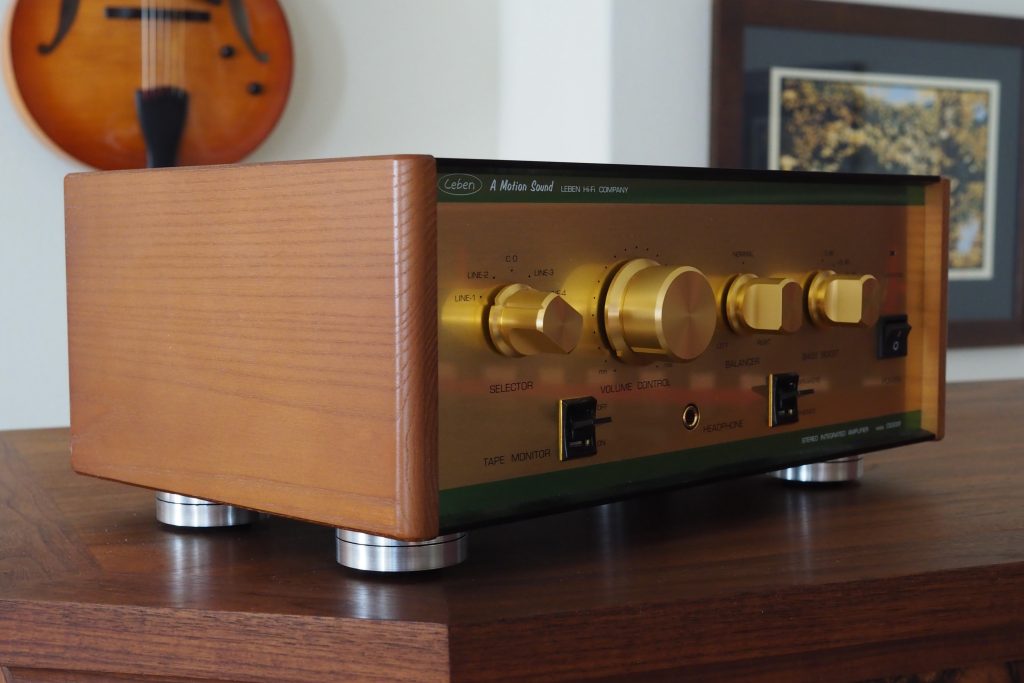
There are attractive white ash side cheeks on the CS-300F, which I think are a classy touch.
Review System
Let's go back to the Leben 'genesis' story for a moment. As I mentioned earlier, if you look closely at the front of the Leben CS-300F integrated amplifier, you'll see that it says 'A Motion Sound' across the top.

When I had asked Hyodo-San about the 'A Motion Sound' inscription, and he had told me, "When I was a youngster, my father worked as a movie projectionist and I went to see many movies with him. Paramount Pictures used to call a movie "A Motion Picture" and I adapted this phrase to Leben."
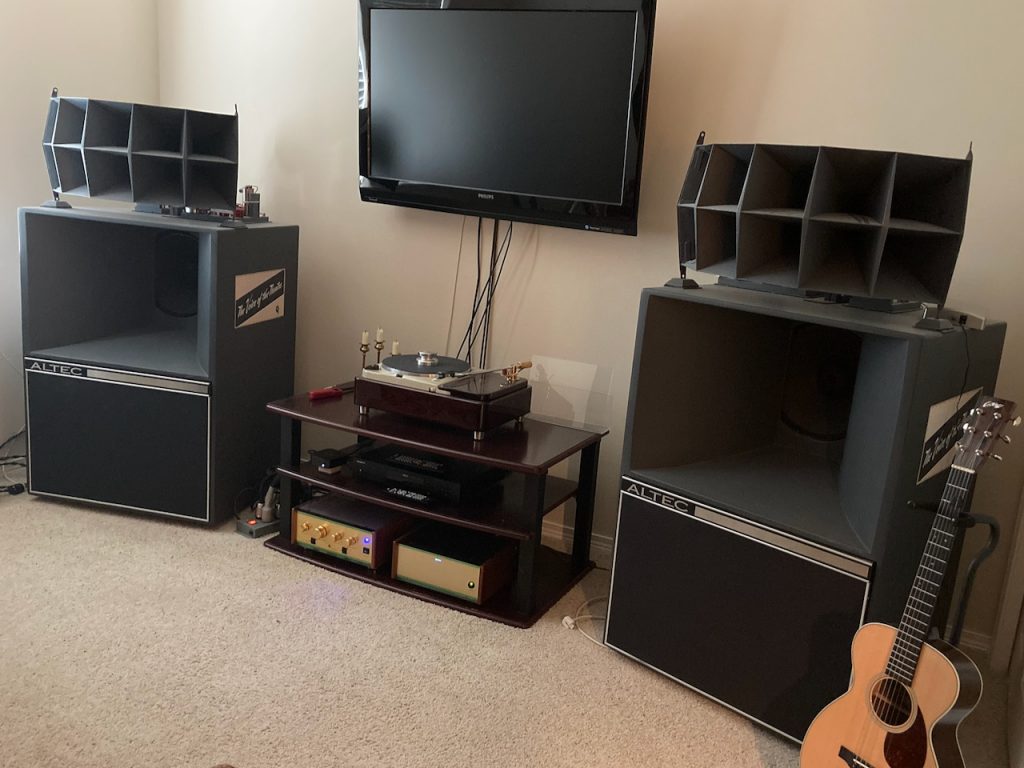
I thought it would be appropriate to honor Hyodo-san and his father's movie projectionist roots in this article by using actual movie theater loudspeakers from the past, my restored vintage Altec A5 Voice of the Theatre loudspeakers (photo above).
My Altec A5 Voice of the Theatre loudspeakers have served as a fun, nostalgic, and great sounding foundation for my audio-visual system for quite a few years now, and Altec A5 loudspeakers like mine were used behind the screens of many of the smaller and mid-sized movie theaters in North America, and elsewhere, for sound reenforcement after their introduction in 1945.
I built custom adjustable crossovers for my vintage Altec A5 loudspeakers based upon the Altec A5 crossover circuit design by Jean Hiraga.
I also incorporated a few design changes into the crossover circuit suggested by friend Yazaki-san, which allows me to fine-tune the balance of the high-frequencies to the low-frequencies to match what is needed for the size of the room that my Altec A5s are in (an almost near-field listening arrangement).
My audiovisual system has an aging Philips television hung up on the wall so I can watch movies or TV shows, kept company by an OPPO UDP-203 Blu-ray player for spinning DVD or Blu-Ray movies, or an occasional CD.
I use an Apple TV for streaming Amazon Prime, Netflix, YouTube, Peacock TV, Kanopy, and the like.
I've found that interconnect cables with silver or silver hybrid conductors sounded too forward and bright with the Leben CS-300F for my tastes, and that my old recording studio favorites, the Belden 8402 tinned-copper microphone cable interconnects, provided a more natural tonal balance with the CS-300F in my AV system.
The speaker cables used for this article were the Duelund DCA16GA tinned-copper speaker cables, which are a longtime favorite and my go-to cables for my various vintage Altec loudspeakers.
For power cables I used a mix of an Acoustic Revive 'Absolute', Acoustic Revive 'Power Reference TripleC NCF', and Sablon Audio 'Petit Corona', all of which are excellent cables.
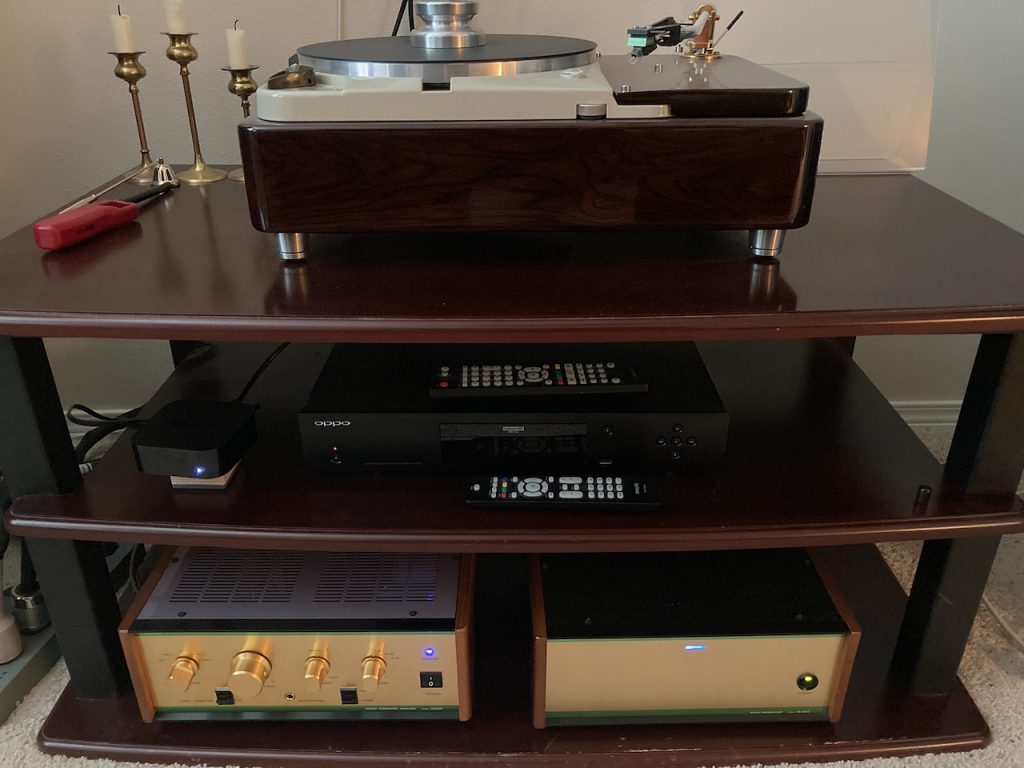
My restored Thorens TD 124 turntable was my analog source for music listening (Artisan Fidelity plinth, Schick tonearm, Soundsmith Carmen Mk II phono cartridge).
Listening Impressions

The title phrase "A Blockbuster of an Integrated Amplifier!" is a play on words that reflects how impressed I was with the Leben CS-300F integrated amplifier's performance as an audio-visual amplifier while watching video sources from Blu-ray discs, or streaming Netflix, Amazon Prime, Peacock TV, Kanopy, or YouTube from my Apple TV.
Clearly Hyodo-san's extensive experience with his movie projectionist father gave him insights into getting impressive performance from video soundtracks, and it is readily apparent with the Leben CS-300F, which bested even my trusty Leben CS-600 in its video soundtrack performance.
But the CS-300F didn't start out like that. The Leben CS-300F integrated amplifier was perhaps the most unusual amplifier I have encountered with how much its sound quality evolved over time during the run-in process, going from ok sounding out of the box, to really bad sounding, and then finally to impressive sounding.
More so than any other amplifier in my experience, this is an amplifier that needed lots of time to run-in before I could make any meaningful conclusions about its overall performance.
The CS-300F needed around 600 hours of run-in time on it before it started to settle down, and then the sound quality began to improve rapidly. That's a lot of run-in time, about six times what it typically takes for an amplifier to fully run-in and settle down.
In contrast, the Leben CS-600X integrated amplifier sounded great out of the box, and its sound quality was fully formed in less than 100 hours, so 600 hours for run-in time is forever!
The Audio-Visual Listening Experience
My patience was rewarded with the final result being that the Leben CS-300F displayed a liquid, astonishingly resolving and transparent, sophisticated, and nuanced presentation, which I thought enhanced the drama and excitement of every video adventure I engaged in.
When the Leben CS-300F was fully run-in, I then understood Hyodo-san's appreciation for the NOS GE JAN 6197 power tubes and 17EW8 drivers, and why he bought large stocks of them, as they can be truly remarkable in the fully run-in Leben CS-300F.
I don't know how many of you will be thinking about buying a Leben CS-300F exclusively for watching movies or televisions shows, but if you are, Hyodo-san's voicing of the CS-300F rewarded me with perhaps the most immersive audio-visual listening experience I've ever heard through my restored vintage Altec A5 Voice of the Theatre loudspeakers.
I don't think I've ever heard an amplifier extract as much recorded information from soundtracks as the Leben CS-300F does. The detail and resolution of recorded information was remarkable, with each contribution to the movie soundtrack having a vivid, unique, place in the overall sound-field that added a true sense of excitement to the listening experience.
With some of the more artfully produced film soundtracks you can get distinctive layering of the aural images of the cinematic dialog, with everyday sound effects of the film foley, the sound of vocalists, musicians and instruments, vividly positioned across the width, depth, and height of the film's 'stage.'
Having all of that recorded information presented so clearly in the film's soundtrack can be really spectacular when it is coupled with a huge sense of ambience space from the soundtrack, which you get in prodigious room filling amounts from the big Altec A5 Voice of the Theatre loudspeakers, courtesy of the transparency and resolution of the Leben CS-300F.
Whether I was watching movies on Blu-ray Discs, or streaming television shows and movies, from the likes of Amazon Prime, Netflix, Peacock TV, or YouTube, the Leben CS-300F imbued a sense of vividness and dynamic presence to aural 'images' in recordings across a wide and deep room filling soundstage that I found particularly captivating.
In fact I would say Hyodo-san has worked some true special effects magic with the CS-300F when it comes to audio-visual listening, which I think even Dream Works Animation and Industrial Light and Magic would be impressed by.
There's just more of everything there to hear. More foley, more voices, more music, more drama, more excitement, more emotional stimulation, and more deeply satisfying audio-visual experience all-around.
I believe that all of that time Hyodo-san spent in movie theaters as a youngster with his father has given him some keen insights into what elements of circuit design and components choices help achieve this level of performance from audio-visual sources, and I suspect the NOS GE JAN 6197 power tubes and 17EW8 drivers piqued his interest in them for their prowess in that regard.
If I were to describe the Leben CS-300F's performance with audio-visual sources in just three words, it would be immersive, exciting, and dramatic.
I wasn't expecting this level of audio-visual sophistication from the Leben CS-300F, and I was mightily impressed.
The Vinyl Record Listening Experience
Exotic amplifiers like the Leben CS-300F integrated amplifier used to be bought by audiophiles primarily for music listening. However, increasingly it has become a video world, and customers increasingly using their hi-fi gear for video, probably more than 50% of the time, according to the feedback I get from readers.
Even though the Leben CS-300F is very impressive in audio-visual listening terms from my digital sources, I suspect that about half of you will be considering the Leben CS-300F integrated amplifier for your audio system solely to listen to music with, specifically vinyl records, which have made an incredible resurgence in popularity for the simple reason that vinyl has stood the test of time because it is a superb format for listening to music.
So how does the Leben CS-300F's exceptional prowess as an audio-visual amplifier translate to the music listening experience?
For listening to vinyl records with the Leben CS-300F, I partnered it with the Leben RS-30EQ phono equalizer.

The RS-30EQ in an impressive phono equalizer in its own right, and is a perfect match for any of the Leben integrated amplifiers, including the Leben CS-300F.
Hyodo-san divides classic valve phono stages into two basic design genres: those like the Marantz Model 7 that use negative feedback (NFB) to achieve RIAA phono equalization; and those like the Harman Kardon Citation IV that use no NFB, and use capacitors and resistors (CR) to achieve RIAA equalization (which Hyodo San considers to be "a masterpiece" of phono preamplifier design).
The vintage Marantz Model 7 uses three stages of 12AX7 amplification for RIAA equalization, where NFB is applied from the 3rd stage cathode to the 1st stage cathode. Hyodo-san says the good points of the NFB type equalization as used in the Marantz are that it's easy to get a good signal-to-noise ratio; it doesn't require high gain; and it isn't very sensitive to tube quality. He says the downside of the NFB approach is that the impedance at high frequencies becomes very low which can give a hard and dry sound that negatively affects musicality.
The downside of the vintage Harman Kardon Citation IV style of CR equalization is the need for high gain and a dependence on very high quality tubes. Implementation is also more difficult than with NFB designs because the tubes are directly amplified, and only the finest can be used. Hyodo-san feels that the difficulties of the CR type of equalization are worth the extra design trouble because it is so stable in the high frequencies, which provides superior musicality by being much more transparent, and more natural and involving sounding.
The vintage Harman Kardon Citation IV phono stage is one of my all-time favorite phono stages, and in the time I spent with one courtesy of my friend Ron Barbee, I found it to have excellent sound quality, and it had an uncanny ability to get the music right in every way that matters to me.
My buddy Doc Leo ended up buying Ron's vintage Harman Kardon Citation IV phono stage for his vintage audio collection, and with Doc Leo's impeccable audio taste, that should tell you a lot. The Citation IV is brilliant!
I might also mention that the Audio Note (UK) Oto Phono SE Signature integrated amplifier's phono stage is also a CR type like the Harman Kardon Citation IV and the Leben RS-30EQ, and all three of these phono stages share the common trait of sounding superb, and being superbly musical.
As an analogy, think of CR phono stages as being the single-ended-triode amplifiers of the phono stage world, they pass along more of the musical experience to the listener than NFB designs, and they do it with a liquid, natural ease, and with superb sound quality that is hard to beat.
In my main music system I've been listening to the The Paul Desmond Quartet's Live album on CD a lot lately, which jazz guitarist and friend David Gitlen brought over for me to hear.
I just love Live, so I searched out and bought a copy of it on vinyl too. I thought I'd give the LP a listen with the Leben CS-300F and RS-30EQ combination to hear its take on Live.
Live, was of course recorded live, in Toronto's Bourbon Street jazz club in 1975, with Paul Desmond on alto sax, Ed Bickert on guitar, Don Thompson on bass, and Jerry Fuller on drums.
I love albums that are recorded live, as the musicians are playing at their most inspired, encouraged by the audience's appreciation of their music.
No dry, lifeless studio recording here, with bored musicians doing multiple takes, this was live music at its best, recorded in real time, and it made listening all that more enjoyable for me.
This is one of those 'must have' jazz albums for its exciting live performances, and the superb musicianship of Paul, Ed, Don and Jerry, playing at their considerable best. Live is also a double LP set, so you get double the listening fun.
For those of you who remember that old audiophile favorite, Jazz at the Pawnshop (recorded in 1976), Live has that same sense of musicians performing at a live venue, along with those little audience interaction cues that adds interest to the album.
While I've always enjoyed listening to Jazz at the Pawnshop, Paul, Ed, Don, and Jerry were at another level of musicianship on Live.
Through the Leben CS-300F and RS-30EQ combination, my Thorens TD-124 turned my Live LP into a beautiful, rich, vivid, and dynamic listening experience.
Don's bass lines sounded articulate, had great pitch definition, and sounded like a string bass is supposed to sound. Paul's alto sax was ravishingly beautiful sounding, and provided a bit of 'bite' when needed.
Ed Bickert on guitar. Just saying that, you know the guitar playing will be brilliant on this album, and it is. Whether Ed is comping, or improvising, his exceptional playing is a big draw for me on this album.
Chet Baker used to say, "It takes a really good drummer to be better than no drummer." Jerry is a really good drummer, and his drumming was always tasteful, adding to the music in important ways while never being a distraction like a lesser drummer might have been.
Then there's the nuance of the appreciative audience in the recording, with compliments, applause as solos are taken, and the sound of life recorded for posterity. The audience interactions made me feel like I was there at the Bourbon Street jazz club enjoying the evening with some of Planet Earth's finest jazz artists.
Have I mentioned I just really love this album? I do, it is one of the great jazz albums, and I recommend it to you for your jazz collection. I would love to see this album reissued on vinyl so it would be easier to find for those of you who don't have it in your collection yet.
Quite a lot of jazz was recorded during the magnetic era of recording (1945 to 1975), so a lot of it is recorded in excellent sound quality, like The Paul Desmond Quartet's Live album described above, and can flatter almost any audio system.
One of my measures of how good individual audio components are, is how well they can perform on albums from all of the recordings eras, from the earliest acoustic (1877 to 1925) and electric (1925 to 1945) eras of recording, to the more modern—and typically more high-fidelity—magnetic (1945 to 1975) and digital (1975 to present) recording eras.
Quality audio components in a carefully voiced audio system can make great musical performances of varied recording quality from across the recording eras sound engaging, astonishing, and entertaining, just like they should, while still demonstrating the differing attributes of the recording techniques and quality inherent in the eras of the recording arts they were from, without distracting from the quality of the musical performances.
A nice test of how well voiced a component or audio system is, is to pick some great musical performances from 78 records recorded in the acoustic and/or electric recording eras and give them a listen.
Some excellent examples from early in the recording arts can be read about in Rob Cowan's article in Gramophone, 250 Greatest Recordings of All Time: Chosen by 35 of the World's Leading Musicians (HERE).
The focus of Rob's list of recordings is on the quality of the musical performances, as chosen by leading musicians, rather than on the recording quality of the albums, as audiophiles might focus on, and a well-voiced system will deliver the magic of the musical performance regardless of recording quality.
The superb musical performances of Saint-Saëns and Sarasate by Heifetz-Barbirolli that violinist Hilary Hahn chose for Rob's article in Gramophone are perfect examples (photo above).
Those performances were originally released on 78 records, which were recorded 1935-1937 by EMI during the electric recording era (1925 to 1945), and then were made available again in 1987 as the Heifetz-Barbirolli The Pre-War HMV Recordings 2 LP album set, due to their enduring importance as great performances.
The recording quality can actually be quite good from the early recording eras, although the recordings are typically noisier (but not always), and tend to have less recorded information above 6000 Hz (but not always), than we find in the magnetic recording era, for example.
Many of those early performances were recorded direct-to-disc at 78 rpm, so you know there's a lot of good musical information stored in those grooves.
Interestingly, some of those early recordings have higher-fidelity within the bounds of their period recording limitations of noise and frequency extension than do many recordings of later recording eras.
I think I've got the voicing of my vintage Altec A5 Voice of the Theatre audio-visual system dialed in pretty well, so that it plays musical performances engagingly across a range of recording quality.
I was actually a little worried that the Leben CS-300F would have difficulty passing the Heifetz-Barbirolli The Pre-War HMV Recordings listening evaluation given that it is very transparent, resolving, and vivid sounding, which might have highlighted the recording limitations of the electric era of recording of these great musical performances.
So how did the Leben CS-300F, with all its resolution, transparency, and vividness fare with Heifetz-Barbirolli The Pre-War HMV Recordings?
Brilliantly. These incredible musical performances come through in mesmerizing fashion, with surface noise of the 78s not being intrusive or detracting from the performances at all.
The dynamic prowess - both macro and micro - the Leben CS-300F integrated amplifier displays on the Heifetz-Barbirolli The Pre-War HMV Recordings was absolutely superb, adding greatly to the excitement and drama of these world-class performances.
I had wondered if all of the resolution and transparency the Leben CS-300F is capable of would draw my attention away from the performances, but it actually enhanced my listening pleasure.
I heard more of the timbre of the instruments, more of unique tone of the individual musicians playing, more of nuance of their technique, more of the drama of the performances, more of everything, and in a very satisfying way.
Heifetz-Barbirolli The Pre-War HMV Recordings grabbed my attention through the Leben CS-300F, and my attention was riveted to what I was hearing from the CS-300F.
With my well-voiced vintage Altec A5 based audio-visual system, the Leben CS-300F was as spectacular playing the magnificent ancient recordings on the Heifetz-Barbirolli The Pre-War HMV Recordings albums, as it was playing the later Paul Desmond Quartet's Live album from the magnetic era of recording.
I've been listening to the Santana Abraxas album since it was released in 1970. This particular LP version of Abraxas is one that has been given the 'audiophile' treatment by Mobile Fidelity.
It always sounds to me like Mo-Fi gooses the presence region of recordings to grab audiophiles' attention. Not all of us audiophiles like that, instead preferring a more natural musical rendering than the 'audiophile spectacular' approach.
Again, for the same reasons, I was a little worried that the Leben CS-300F would have difficulty with the 'audiophile spectacular' voicing of the Mo-Fi version of Santana Abraxas during my listening evaluation.
I'll make my listening assessment short and not so sweet for you, as the Leben CS-300F sounded horrible on Santana Abraxas. It accentuated the 'audiophile spectacular' balance of this reissue to the point that it was basically unlistenable, being forward, thin, and brash in the presence region, and trying to enjoy the music was impossible.
While the Leben CS-300F you can hear everything about the nature of a recording, and what was done with it, and in this case what I heard wasn't something I enjoyed.
Carlos Santana is a brilliant musician and composer, and his music is filled with compelling rhythms, lots of percussion and drive, with lots of cool musical elements that have entranced listeners from the beginning of Carlos' career.
One of the big hits from Abraxas was "Black Magic Woman," which Carlos borrowed from Fleetwood Mac's Peter Green's earlier Black Magic Woman album (photo above).
Peter Green's version sounds more like you might hear in a blues club from a 'bar band,' with lots of bluesy energy and drive, but its Santana's version that is remembered today by most listeners. Fleetwood Mac Black Magic Woman should be in everyone's music library, but they are getting harder to find. However, at the moment there are 50 listed on Discogs. The last time I checked there were two.
By the way, the Leben CS-300F sounded great on Fleetwood Mac's Black Magic Woman album, just as it did on The Paul Desmond Quartet's Live album, and the Heifetz-Barbirolli The Pre-War HMV Recordings, and too many others to mention.
Personally, I like Peter's version better for its rawness and drive, but Santana's is far more sophisticated, nuanced, and contains a lot more musical information to excite the senses of audiophiles.
Hint: Get the original Columbia version of the Santana Abraxas album if you want to hear a more natural sounding version of this musical masterpiece. There were 118 copies available on Discogs at the time I checked.
I recommend that you have both albums in your collection so you can hear Peter's version of "Black Magic Woman" that inspired Santana, and hear what Santana did with his inspiration on his version of "Black Magic Woman."
Both are brilliant.
The Leben CS-300F integrated amplifier tells you a lot about a recording, by resolving every little bit of information in the songs, and presenting all of it with a lot of energy, drive, and dynamics.
In the case of the Mo-Fi version of Abraxas the Leben CS-300F came across as hard and harsh, with a sort of 'synthetic' glassy quality to the music in the presence region, which the CS-300F made very apparent.
One might want to lay blame on the CS-300F for those issues with Abraxas, and perhaps some blame is due, but listening to the Heifetz-Barbirolli The Pre-War HMV Recordings that were sourced from 78 records, from the electric recording era, for example, sounded beautiful, even with the limitations of the electric era of recording. Ditto for the other vinyl records I listened to with CS-300F, it sounded great on everything that hadn't been given the 'audiophile spectacular' treatment.
The Leben CS-300F Compared to the Leben CS-600
I know a lot of you Leben enthusiasts out there will want to know how the CS-300F integrated amplifier compares to the gold standard of Leben integrated amplifiers, the CS-600, which is my reference integrated amplifier in my audio-visual system.
My Leben CS-600 integrated amplifier has been a trusted friend now for nearly 15 years, and is a 'forever' integrated amplifier for me.
After placing the CS-600 into the system in place of the CS-300F, and letting it warm up, I listened to Abraxas again.
I thought Abraxas through the CS-600 sounded warmer, with more body, more richness, and the music was more accessible, than it was with the CS-300F, and I enjoyed listening to it a great deal.
Ok, so maybe all the blame can't be laid at the feet of the Mo-Fi version of Santana's Abraxas, as the CS-600 turned Abraxas into an enjoyable listening session when the CS-300F couldn't. But there's a big 'but' here in that the CS-300F didn't have any trouble turning other albums into enticing music listening experiences, except for Abraxas, so draw your own conclusions there.
The Heifetz-Barbirolli The Pre-War HMV Recordings pretty much blew me away with the CS-300F, with great musicianship, incredible drama, and beautiful sound quality for the electrical era of recording.
The CS-600 exhibited more warmth, more body, more richness, with the Heifetz-Barbirolli The Pre-War HMV Recordings, yet I found that the CS-300F presented the music on the recording more convincingly, with more drama, and more excitement, which drew me into the performances more. With the CS-300F I knew I was hearing some of the greatest recorded musical performances of all time, and that wasn't the case with my CS-600.
Both the CS-300F and CS-600 make the Paul Desmond Quartet's Live album a sublime listening experience.
As I've noted with other albums, the CS-600 is warmer sounding, has more body, and some extra richness in its presentation.
The CS-300F has more clarity and serves up more nuance from the recordings, and told me more about the differences between the recording eras and techniques, but where the CS-300F really excelled was presenting the drama and excitement of the musical performances.
As I mentioned earlier, if I were to sum up the CS-300F integrated amplifier in just three words, it would be immersive, exciting, and dramatic. The CS-300F is absolutely thrilling to hear when playing movie soundtracks, and plays music wonderfully well too, for most albums.
In comparison, the CS-600 is more classically tube-like, more relaxed sounding, warmer, richer, and presenting aural images with more body and naturalness.
The newer CS-600X version is even more classically tube-like than my original CS-600, and is warmer, richer, smoother, and more relaxed sounding in comparison. I like the CS-600X a lot, and have missed it after it departed my listening room.
Summary and Conclusions
The CS-300F vacuum tube integrated amplifier has a lot going for it both musically and sonically, and I enjoyed my time with it a lot. I recommend it to you.
One thing I can say that is a true compliment to the CS-300F, is that after the CS-300F was fully run-in, I never once felt the urge to take it out of my audio-visual system and put my CS-600 back in. I felt happy and content with the way the CS-300F performed in my audio-visual system, and I could easily live with it for the long term.

It is evident that Hyodo-san knows a lot about getting great sound from movie soundtracks, and I was in awe of how easily the CS-300F pulled me into the film experience. Everything I watched sounded exciting, dramatic, and immersive. I loved it!
On most record albums the CS-300F was really quite brilliant as well, and for whatever reason, the CS-300F makes musical performances from the acoustic and electric eras of the recording arts particularly spellbinding to hear over my big Altec A5 loudspeakers. Enthusiasts of recordings from those early eras should take note.
The CS-300F will tell you a lot about the recording and mastering techniques used in the magnetic and digital eras of recording. If the albums were done artfully, that artfulness will come through fully. If albums were given an 'audiophile goose' in the presence region, you'll hear that too, like on Abraxas.

To get the best performance from the CS-300F I think it is best paired with warmer and more natural sounding sources, cables, and loudspeakers.
My high-output Soundsmith Carmen Mk II phono cartridge was a superb match to the voicing of the CS-300F, as were the Belden 8402 microphone cable interconnects and Duelund DCA16GA loudspeaker cables I use in my audio-visual system.
Not too many of you have vintage Altec A5 Voice of the Theatre loudspeakers that you can relate to, but reports from the field tell me that BBC LS3/5A and Zu Audio loudspeakers are a happy match, and I'm sure if you check with your local Leben dealer they'll have good suggestions for you as well.
In the not too distant future Peter Qvortrup will be sending me a pair of Audio Note (UK) loudspeakers to listen to, so if the Leben CS-300F is still here at that time I'll report back on how it fares in that context.
Let me mention a few things I like / don't like about the Leben CS-300F integrated amplifier.
What I Don't Like About The Leben CS-300F
First of all, I don't like how long it took for the Leben CS-300F to fully run-in. The one I have here took an extraordinary 600 hours before I really began to hear what it was capable of.
At its worst during the run-in process, the CS-300F sounded hard, forward, distorted, amusical, and compressed. Don't freak out about what you hear during the run-in period, just give it plenty of run-in time and it will transform.
Secondly, I don't like that the NOS GE JAN 6197 power tubes and 17EW8 driver vacuum tubes used in the CS-300F's circuits are no longer in production.
That's not a deal breaker if you are considering a Leben CS-300F, as these unique vacuum tubes appear to be both plentiful and inexpensive at the moment, but word to the wise: stock up on these vacuum tubes now while they are plentiful so you can enjoy your CS-300F's charms in the decades to come without worry.

Also, if the Leben CS-300F stays around for a while longer I'll try some different brands of NOS 6197 pentode power tubes and 17EW8 drivers in the CS-300F, and let you know how that works out.
Thirdly, I don't particularly like the purple top & bottom covers. I get it though, the idea is to suggest there's something special about the Leben CS-300F, and there is, which would be the NOS GE JAN 6197 power tubes and 17EW8 driver tubes that give the CS-300F such stellar performance on film soundtracks and most music albums.
What I Like About The Leben CS-300F
First of all, while not inexpensive, I like that the Leben is fairly priced for such a finely crafted, exotic, and high-performance integrated amplifier at $3995 USD.
Secondly, I love the Leben CS-300F's appearance, it just oozes classy sophistication with its wood side panels, gold and green accented chassis … and ahh … well, I guess I can even live with the quirky purple 'color of royalty' top cover (and bottom plate).

Thirdly, I love the drama, excitement, dynamics, presence, resolution, and transparency that makes film soundtracks sound better than they have any right to.
Fourth, the Leben CS-300F plays most vinyl records in combination with the Leben RS-30EQ remarkably well. If your system is well voiced, and you should take time to make sure it is, then you will be able to enjoy all the pleasure that can be had from the breadth of the musical performances that are in our historic music canon across the acoustic, electric, magnetic, and digital eras of the recording arts.
Fifth, I love the compact size of the Leben CS-300F's chassis. In combination with the Leben RS-30EQ phono equalizer one could setup a system that will play vinyl and digital very nicely, and not take up the whole room like most of my systems do.
Sixth, I love that the Leben CS-300F weighs in at a shade under 25 pounds, making it easy to move around for a tube amp, rather than the power lifting exercise the heavier CS-600, or most other tube amplifiers, represent. The CS-300F is easy on my back.
Seventh, at 15 watts of output power the Leben CS-300F can power a fairly wide range of loudspeakers.
Eighth, I've found my personal Leben CS-600 and the RS-30EQ phono stage to be remarkably reliable and trouble free, and I have no reason to think that the CS-300F integrated amplifier will be any different.
Final Thoughts
I should mention that those who enjoy listening to music through headphones rave to me how good headphone listening is with Leben integrated amplifiers. Stunningly good, I'm told. I'm not a headphone listening sort of guy, so you and I will have to take their word for it.

I would like to thank Mr. Taku Hyodo (Leben HiFi Stereo Company), and Mr. Yoshi Hontani (Muson Project, Leben exporter), for making this review of the Leben HiFi Stereo Company CS-300F integrated amplifier possible.
The new Leben HiFi Stereo Company CS-300F integrated amplifier is imported to North America by Jonathan Halpern's Tone Imports, and retails for $3995 USD.
Leben HiFi Stereo Company
Importer to the USA is Mr. Jonathan Halpern of Tone Imports: www.toneimports.com
For those who live in countries that don't have a Leben distributor, please contact Mr. Yoshi Hontani for advice (Muson Project, Leben exporter): Hontani-san's email address is [email protected]
As always, thanks for stopping by to read my audio articles here at Positive Feedback, and may the tone be with you!




